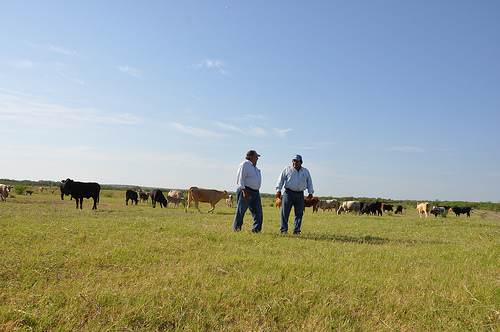
Javier Mancha, right, visits with NRCS District Conservationist Serafin Aguirre about pasture conditions and grazing plans for his cattle.
For 40 years, Vietnam veteran Javier Mancha has developed his Maverick County, Tex. land by hand, and relied on USDA’s Natural Resources Conservation Service (NRCS) to help incorporate conservation practices into his operation.
Mancha’s Rosita Valley farm is known locally for growing some of the hottest peppers and sweetest melons around, and over the years, has grown and sold enough produce to put four daughters through college. Read more »
The Foreign Agricultural Service (FAS) office in Ottawa, through its food and beverage alliance, tasteUS!, recently launched a new website that provides Canadians with information on top quality U.S.-grown food and the more than 40 U.S. cooperators whose products are found in grocery stores across Canada.
“Our tasteUS! website is a great tool for Canadians in helping them understand the agricultural goods imported from the U.S. that are available to them. We’re promoting a ‘buy regionally’ approach that can bring down grocery costs – especially in the winter months when Canadian produce is scarcer,” said Scott Reynolds, FAS Minister-Counselor for Agricultural Affairs at the U.S. Embassy in Ottawa.
Found at www.tasteUS.ca, the website has detailed information on tasteUS! affiliated cooperators, relevant news articles, facts on nutrition and recipes provided by the cooperators. It allows Canadians to educate themselves about the food and beverages imported into Canada from the United States – from fresh fruit like apples, pears and peaches, to vegetables such as tomatoes, to wine, beer and fruit juices – and the producers behind it all. Some of the cooperators represent commodities not grown in Canada, such as papaya and catfish. Access to these types of foods gives Canadians even more options to support their healthy food choices. Read more »

